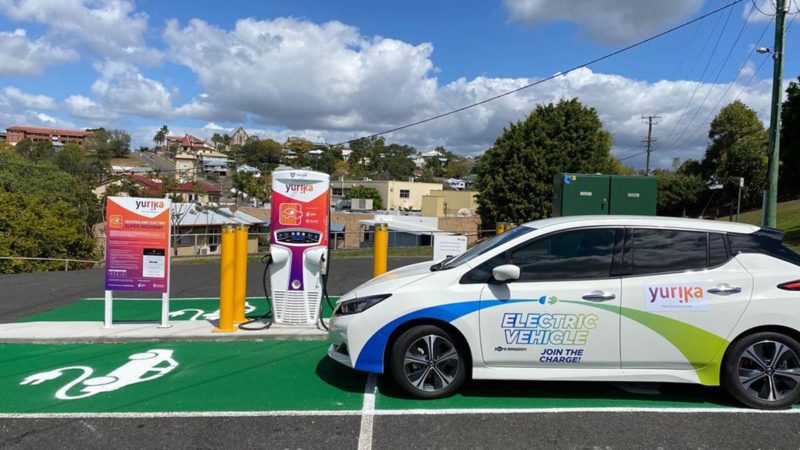The Queensland government is getting started on Phase 3 of its Queensland Electric Super Highway, installing more sites across regional Queensland.
Otherwise known as the QESH, it is the longest intrastate electric car charging network in the world. At least, until the West Australia government implements its own one.
But for now, it is the QESH. With 31 sites already in place up the east coast of the sunshine state, now a swathe of new sites stretching into western Queensland will be added under Phase 3, the state government announced on Wednesday afternoon.
“Queensland’s going electric,” tweeted state premier Annastasia Palaszcuk.
“We’ve already built 31 fast charging stations from Coolangatta to Port Douglas and from Brisbane to Toowoomba. Now western Queensland will be home to 24 new electric vehicle fast-charging stations.”
“Phase 3 of the Queensland Electric Super Highway will extend the Queensland Electric Super Highway to link with more regional and rural locations,” the state government’s website says.
“It will also deliver further connections along the Queensland/New South Wales border with 2 charging station locations planned at Goondiwindi and Stanthorpe.”
Importantly, the new announcement includes six new sites thanks to an additional $1.08 million in funding, that will add to the 18 previously foreshadowed.
“Phase 3 had already been allocated $2.75 million to build 18 sites at Charters Towers, Hughenden, Julia Creek, Cloncurry, Mount Isa, Goondiwindi, Stanthorpe, Winton, Longreach, Barcaldine, Blackall, Emerald, Dingo, Charleville, Roma, Miles, Kingaroy and Esk,” said Palaszcuk in a release.
“I am pleased to announce today an additional $1.08 million has been secured to deliver six more charging stations at Richmond, Kynuna, Injune, Rolleston, St George and Cunnamulla.”

The state hopes that the additional charging stations will help entice electric vehicle drivers to visit outback Queensland, boosting tourism dollars after a difficult two years stymied by the pandemic.
“This will help encourage more uptake of electric vehicles and inspire EV owners to take longer trips into regional Queensland to boost tourism and local communities,” the premier said in a follow-up tweet.
“These new stations will add 1,586km to the network bringing the total super highway to 5,386km in length extending it from Mount Isa in the north west to Goondiwindi in the south.”
The number of electric vehicles on Australian roads as been tripling in recent years. In 2021, there were 20,665 new plug-in electric vehicles sold in Australia. Queensland drivers accounted for 4,567 of them, equating to 1.96% of the Queensland auto market.
Queensland minister for transport Mark Bailey said that between the inception of the QESH charging network in 2018 and the end of April 2022, more than 55,000 charging sessions had been logged, equating to up to 1,347 tonnes of CO2 emissions.
“This is the equivalent of removing 391 petrol or diesel vehicles from Queensland roads,” he said.

Bridie Schmidt is associate editor for The Driven, sister site of Renew Economy. She has been writing about electric vehicles since 2018, and has a keen interest in the role that zero-emissions transport has to play in sustainability. She has participated in podcasts such as Download This Show with Marc Fennell and Shirtloads of Science with Karl Kruszelnicki and is co-organiser of the Northern Rivers Electric Vehicle Forum. Bridie also owns a Tesla Model Y and has it available for hire on evee.com.au.


